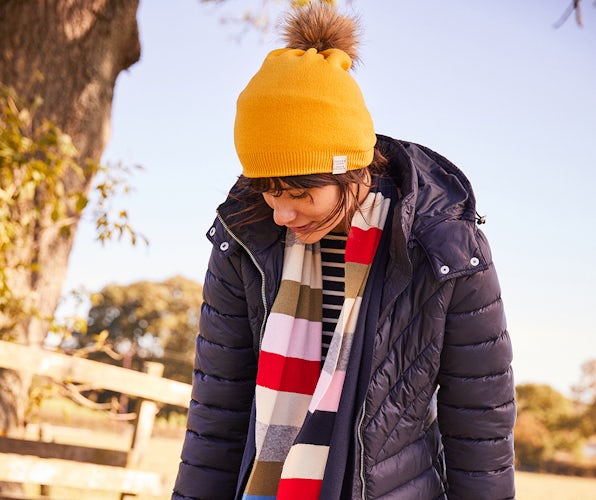Charlotte Rogers: H&M has raised the bar for transparency, but do consumers really care?
As H&M commits to share supplier and production details for all its products, sales at the likes of Boohoo and Primark continue to rocket, posing the question – do consumers really care about transparency?

H&M began the next phase of its transparency agenda this week. It now shares details on the production country, supplier, factory names and addresses for all the garments being sold online across its 47 markets. Customers are also able to find out how many workers the factories employ, as well as access specific information about the materials used to make the garment.
Shoppers can also access this ‘transparency layer’ in store by using the H&M app to scan the price tag on a product. The hope is that sharing this level of information will help shoppers make more informed choices and show the wider fashion world it is possible to be open and transparent.
H&M has a history of bringing sustainability into mainstream fashion.
In 2010, it unveiled its eco-friendly Conscious Collection of organic cotton, hemp and recycled polyester garments. Three years later, it became the first fashion company to collect old textiles in store for reuse and recycling, and in 2014 released its first line made from recycled fibres gathered through the scheme.
Meanwhile, through its Conscious Exclusive collection of premium sustainable pieces made from recycled glass and silver, as well as orange fibres it hopes to take eco-fashion up a gear.
When sales keep rolling in and shareholders leave every AGM satisfied, where is the incentive to drive real change?
Currently 57% of the clothes the company sells are made from sustainably-sourced materials, but the goal is to get to 100% by 2030 and to be ‘climate positive’ throughout its value chain by 2040.
The work H&M has done over the past 12 months has helped the group improve its score on Fashion Revolution’s 2019 Fashion Transparency Index, which rates 200 brands and retailers across 202 indicators, to produce a score out of 100%.
While no brand exceeds the 65% mark, H&M is among the top five brands in the global listing. Sportswear giants Adidas (64%), Reebok (64%) and ethical clothing brand Patagonia (64%) top the ranking, followed by Esprit (62%) and H&M (61%). While the Swedish retailer was fourth highest in last year’s index, H&M improved on its 2018 score by six percentage points.
A score of between 61-70% means the brand is publishing detailed supplier lists, including information about manufacturers and processing facilities, as well as its raw material suppliers. The introduction of the transparency layer could propel H&M even higher up the Fashion Transparency Index in 2020.
READ MORE: Marketers must get closer to supply chain or risk long-term brand damage
Does it make a difference?
There is no question that H&M is seeking to move the fashion industry in a more sustainable direction, but the problem is transparency is not important to all consumers – or at least not all the time.
Boohoo, which scores just 11% on the 2019 Fashion Transparency Index, reported record results this week. Group revenue soared by 48% to £856.9m in the year to 28 February, while it notched up a 49% increase in pre-tax profit to £76.3m. The Boohoo brand alone has seven million active customers and saw its revenue spike by 16% to £434.6m.
The growth was even more pronounced for stablemate PrettyLittleThing, which experienced a 107% increase in revenue to £374.4m. Meanwhile, revenue at sister brand Nasty Gal rocketed by 96% to £47.9m. Reacting to the results, CEO John Lyttle praised the group’s “disruptive and proven business model”.

Despite the group’s significant appeal to the millennial and Gen Z consumer, Boohoo does not have a reputation for operating the most transparent supply chain. The fast fashion retailer was criticised by the Advertising Standards Authority (ASA) in January for advertising a jumper as ‘faux fur’ when the product contained real rabbit hair.
In fairness, Boohoo is not the only brand to fall foul of this year’s Fashion Transparency Index. Forever 21 and Urban Outfitters notched up disappointing scores of 5%, Sports Direct could only manage 7%, while JD Sports came in at 11%. Topshop managed a score of 28%, New Look reached 30% and Primark fared slightly better at 35%.
When you look at a brand like JD Sports, a lack of transparency is in no way holding the business back. Earlier this month the sportswear giant reported a 49.2% leap in revenues to £4.7bn, with pre-tax profit up by 15.4% to £339.9m.
READ MORE: Meet the brands making retail work in 2019
Likewise, Primark continues to buck the high street gloom with operating profits up 25% to £426m in the six months to 2 March and sales rising by 4% to £3.6bn. Owner Associated British Foods claimed the retailer grew its share of the UK clothing, footwear and accessories market during the period, despite continuing to shun ecommerce.
Such is Primark’s popularity that earlier this month the Irish retailer unveiled its biggest store to date in Birmingham. Standing at a whopping 160,00sq ft and cast in the style of a modern department store, the world’s largest Primark spans five stories, has three food areas, a beauty salon, nail bar and a barbers. It even features a Disney-themed café.
While it would be unfair to suggest that every fast fashion retailer has a shady supply chain, what the Fashion Transparency Index figures suggest is these brands are far from being as transparent as they could be and yet their sales and profits continue to soar.
In an age dominated by climate catastrophe and concerns over supply chain transparency it would be an incredible step forward if every fashion retailer followed in H&M’s footsteps. But, when sales keep rolling in and shareholders leave every AGM satisfied, where is the incentive to drive real change?
It is fantastic that there are trailblazers like H&M, but until consumers demand more from brands with less than transparent reputations much needed change across the wider fashion industry remains out of reach.







